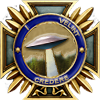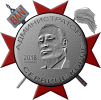Chukzombi
Millie's Staff Member
http://en.wikipedia.org/wiki/Kon_tiki
i saw this last week and was really impressed by the performances of these actors. i read the book as a teen and enjoyed the sense of adventure and exploration it gave. the movie adaption brought back those same feelings. i really hope they do Aku-Aku next.
http://en.wikipedia.org/wiki/Aku-Aku
Kon-Tiki was the raft used by Norwegian explorer and writer Thor Heyerdahl in his 1947 expedition across the Pacific Ocean from South America to the Polynesian islands. It was named after the Inca sun god, Viracocha, for whom "Kon-Tiki" was said to be an old name. Kon-Tiki is also the name of Heyerdahl's book, the dramatised feature film nominated for the Academy Award for Best Foreign Language Film, and the Academy Award-winning documentary film chronicling his adventures.
Heyerdahl believed that people from South America could have settled Polynesia in pre-Columbian times, although most anthropologists now believe they did not.[1][2][3] His aim in mounting the Kon-Tiki expedition was to show, by using only the materials and technologies available to those people at the time, that there were no technical reasons to prevent them from having done so. Although the expedition carried some modern equipment, such as a radio, watches, charts, sextant, and metal knives, Heyerdahl argued they were incidental to the purpose of proving that the raft itself could make the journey.
The Kon-Tiki expedition was funded by private loans, along with donations of equipment from the United States Army. Heyerdahl and a small team went to Peru, where, with the help of dockyard facilities provided by the Peruvian authorities, they constructed the raft out of balsa logs and other native materials in an indigenous style as recorded in illustrations by Spanish conquistadores. The trip began on April 28, 1947. Heyerdahl and five companions sailed the raft for 101 days over 6900 km (4,300 miles) across the Pacific Ocean before smashing into a reef at Raroia in the Tuamotu Islands on August 7, 1947. The crew made successful landfall and all returned safely.
Thor Heyerdahl's book about his experience became a bestseller. It was published in 1948 as The Kon-Tiki Expedition: By Raft Across the South Seas, later reprinted as Kon-Tiki: Across the Pacific in a Raft. A documentary motion picture about the expedition, also called Kon-Tiki was produced from a write-up and expansion of the crew's filmstrip notes and won an Academy Award in 1951. It was directed by Thor Heyerdahl and edited by Olle Nordemar. The voyage was also chronicled in the documentary TV-series The Kon-Tiki Man: The Life and Adventures of Thor Heyerdahl, directed by Bengt Jonson.[4]
The original Kon-Tiki raft is now on display in the Kon-Tiki Museum in Oslo.
i saw this last week and was really impressed by the performances of these actors. i read the book as a teen and enjoyed the sense of adventure and exploration it gave. the movie adaption brought back those same feelings. i really hope they do Aku-Aku next.
http://en.wikipedia.org/wiki/Aku-Aku
Aku-Aku
From Wikipedia, the free encyclopedia
Jump to: navigation, search
This article is about the book by Thor Heyerdahl. For the Crash Bandicoot character, see Aku Aku. For the former settlement in New Zealand, see Akuaku.
Aku-Aku: the Secret of Easter Island is a 1958 book by Thor Heyerdahl that describes the 1955-56 Norwegian Archaeological Expedition's investigations of Polynesian history and culture at Easter Island, the Austral Islands of Rapa Iti and Raivavae, and the Marquesas Islands of Nuku Hiva and Hiva Oa. Visits to Pitcairn Island, Mangareva and Tahiti are described as well. By far the greatest part of the book tells of the work on Easter Island, where the expedition investigated the giant stone statues (moai), the quarries at Rano Raraku and Puna Pau, the ceremonial village of Orongo on Rano Kau, as well as many other sites throughout the island. Much of the book's interest derives from the interaction of the expedition staff, from their base at Anakena beach, with the Easter Islanders themselves, who lived mainly in the village of Hanga Roa.
The book and a follow-up film of the same name made a major contribution to general public awareness of both the island and the statues.[1] Some of Heyerdahl's conclusions have been questioned by archaeologists, plus his methods of selecting evidence to confirm his point of view. Notable is that professionalism in the fieldwork cannot be disputed since he used educated archaeologists.








